Renewable energy integration testing facilities
Rooftop photovoltaic (PV) array performance monitoring and laboratory module characterization facilities
.jpg)
The CanmetENERGY research centre in Varennes operates a 39.7 kWDC rooftop PV system which contributes to the building’s energy needs and is used for research on array performance and reliability. The rooftop system consists of sub-arrays with a variety of configurations: string inverters (10 kWAC), micro-inverters (14.3 kWAC), power optimizers (5 kWAC), and a reconfigurable section for inverter testing (5.9 kWDC). In order to quantify array performance, both electrical and meteorological data are collected. Three on-site weather stations measure solar irradiance, ambient and module temperature, wind speed, solar spectrum, snow depth, precipitation, and a variety of other variables. A separate module test rack with side-by-side cleaned and soiled modules is used to quantify the effects of snow on PV power output.
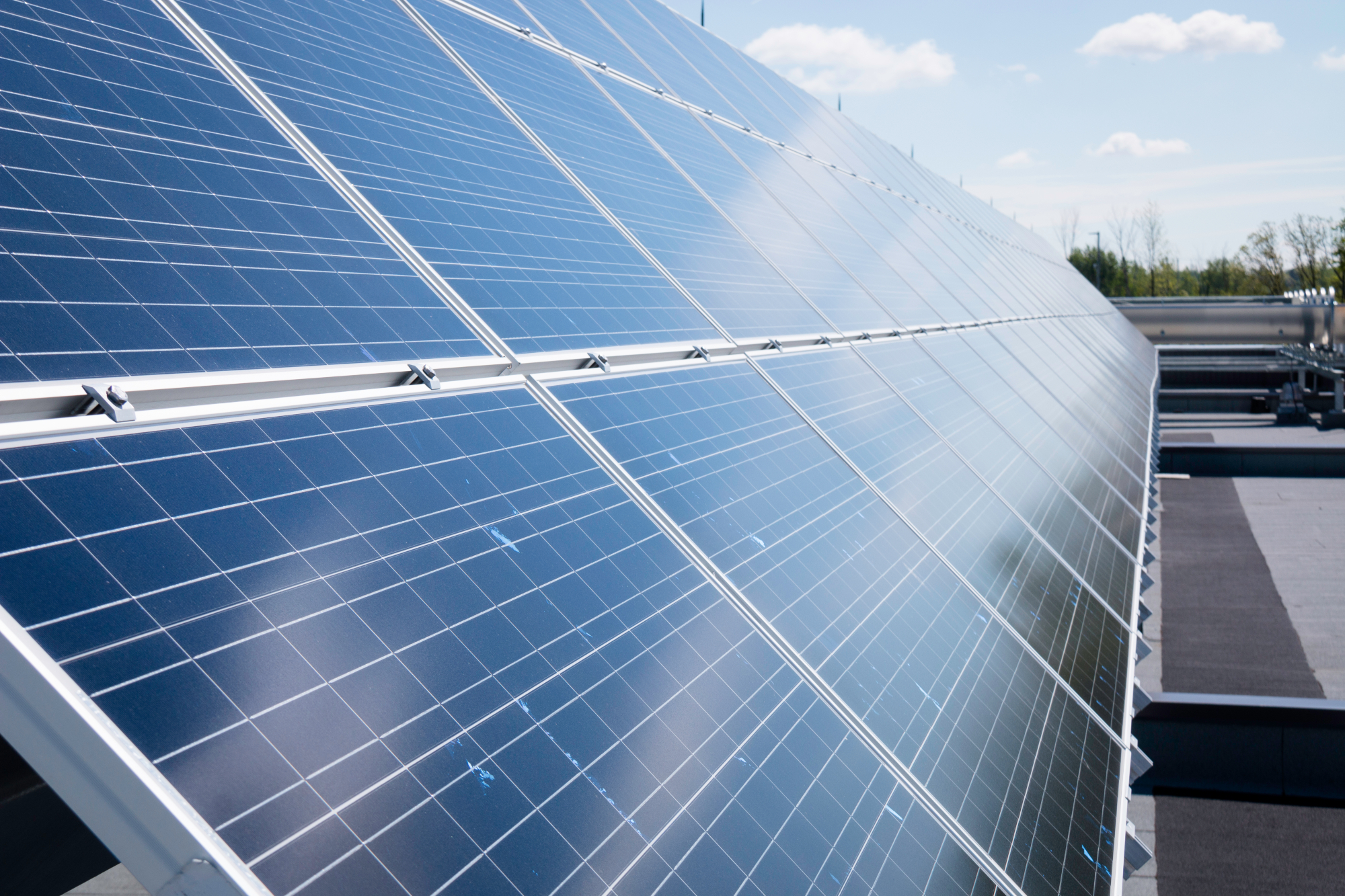
Rooftop PV array at CanmetENERGY in Varennes
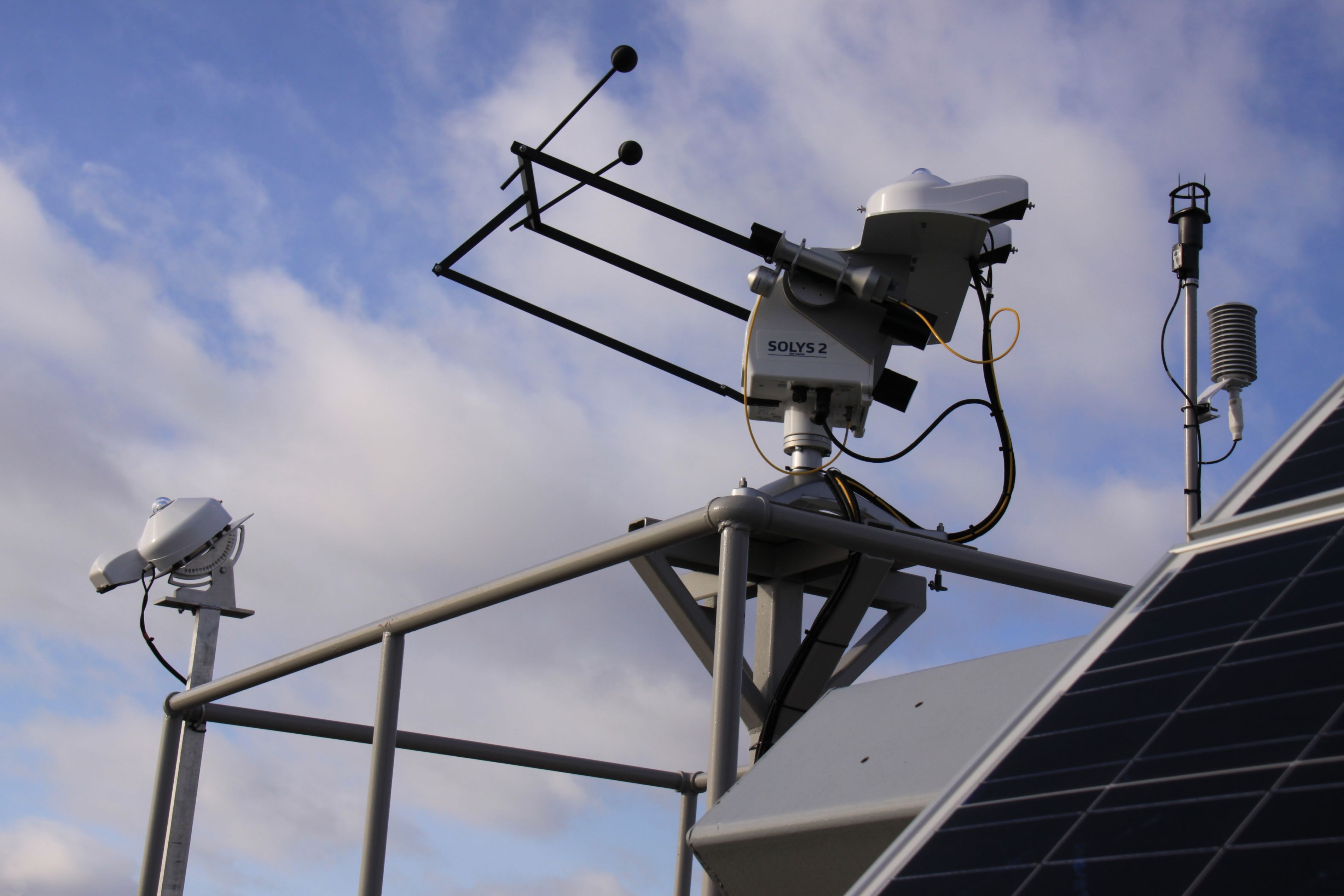
Meteorological station at CanmetENERGY in Varennes
In addition to the outdoor testing facility, CanmetENERGY also has indoor PV testing equipment: a large area pulsed solar simulator that mimics the sun’s spectrum for measurement under controlled temperature and irradiance. As new solar cell and PV module technologies enter the market and module size increases, performance rating of PV devices under standard test conditions is critical. The solar simulator is used to measure the current-voltage characteristics of PV modules and identify micro-cracks and electrically inactive zones within cells by electroluminescence. In order to determine module performance under a range of operating conditions such as elevated temperature and low light illumination, irradiance and temperature can be varied from 100 to 1100 W/m2 and 15 to 75 °C using automated software and a neutral density filter. This equipment allows CanmetENERGY in Varennes to perform measurement for industry partners, measure high efficiency modules, and contribute to the development of PV testing standards such as the IEC 60904 series.
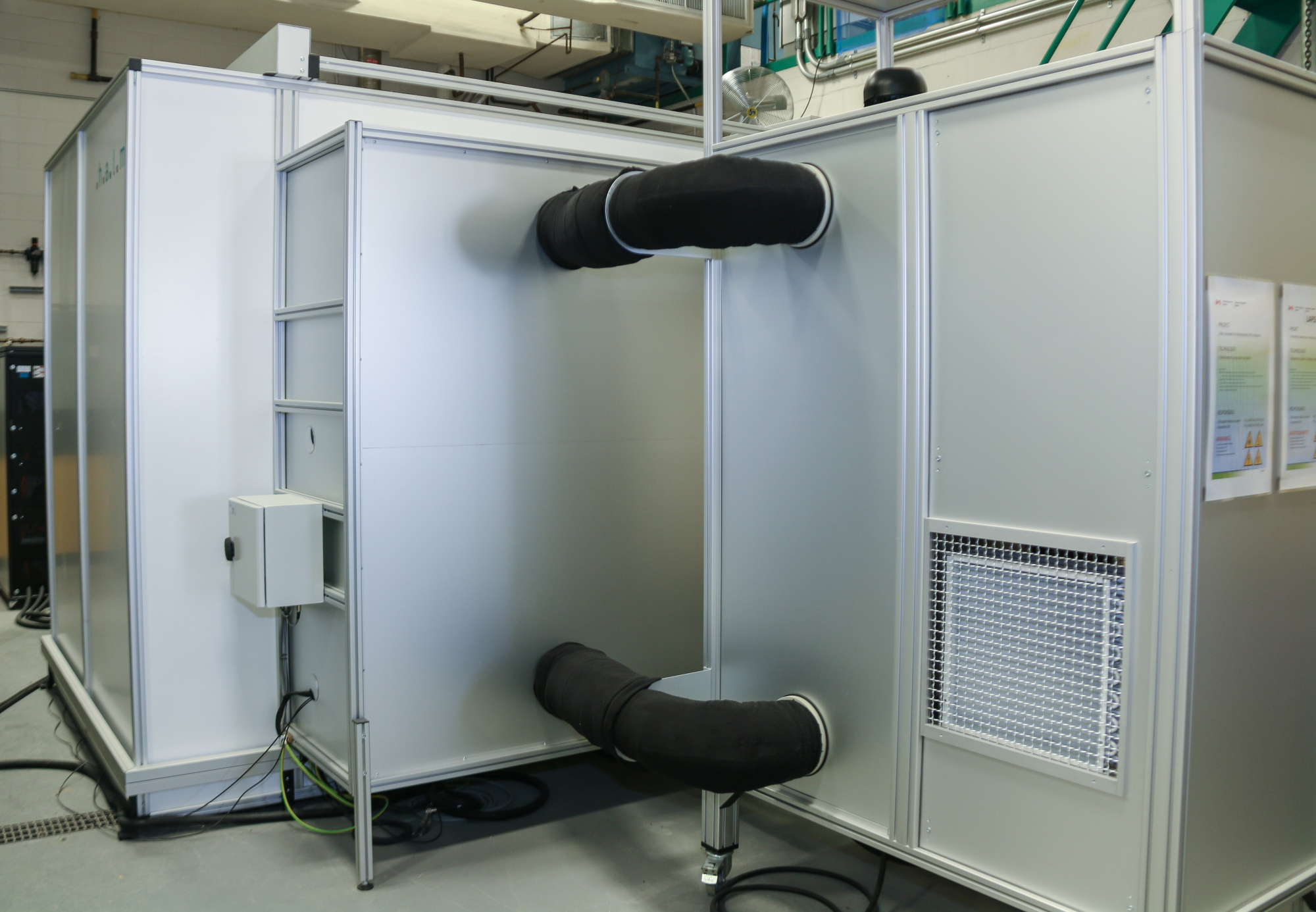
Large area pulsed solar simulator at CanmetENERGY in Varennes
Grid simulator and power conversion equipment test facility
This facility allows testing of solar PV power conversion equipment, especially, inverters. It is used to evaluate their performance, investigate their capabilities to support the grid, and verify their protection behaviour in case of faults or islanding conditions. One of the main concerns for utilities lies in the safety issues related to system reliability and personnel safety with respect to inverter-based distributed power sources operating in parallel with the grid. The test bench features a 90 kVA three-phase bi-directional utility grid simulator with a 120 kW/kvar programmable RLC load bank, 20 kW of DC power supplies, 60 kW of PV simulators, 5.9 kW of rooftop PV modules, a programmable AC switch and high-performance power analyzers. AC and DC measurement points are available throughout the system for detailed behaviour assessment. It also provides an open development platform to investigate new control strategies to alleviate specific interconnection issues. The facility is equipped with a leading-edge hardware-in-the-loop (HIL) simulator system for real-time power system testing combining power system simulation including physical equipment. The test facility was designed to support the development of new power conversion equipment and to perform side-by-side evaluations of the quality of commercial inverter products sold in Canada.
As power conversion equipment evolves with advanced inverter functions (AIFs), this facility will continue testing the limits and best configurations for new equipment.
CanmetENERGY in Varennes actively participates in the Smart Grid International Research Facility Network ,more specifically in the DER (distributed energy resources) Test protocols working group. This group has collaborated in the development of an open platform facilitating compliance testing to current North American standard such as UL 1741 SA, IEEE 1547.1, CSA C22.3 No. 9, etc. This software allows automated certification testing of commercial PV inverters grid compatibility and support functionalities and thus allows assessment of the standards for further improvement or corrections. CanmetENERGY in Varennes participates in the development of national and international standards to eliminate technical barriers and promote the adoption of reliable products suitable for Canadian climatic conditions.
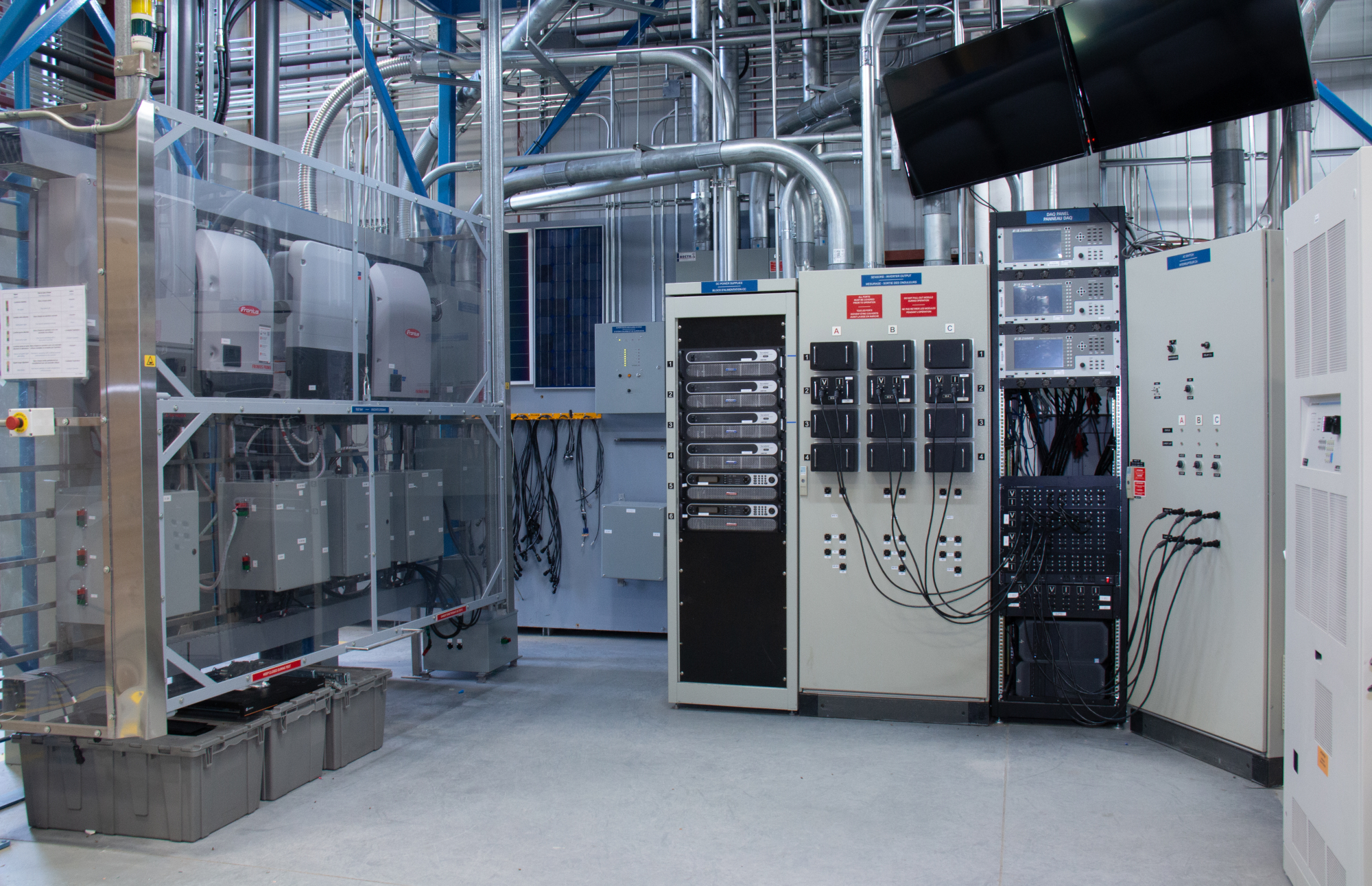
Inverter and grid emulating testbench at CanmetENERGY in Varennes
Electric water heater testing facility
The electric water heater (EWH) testing facility is used for monitoring the state of EWHs under different operating conditions. The test bench can accommodate for up to four EWHs and simulate water draws of various flowrates and durations at different water inlet temperatures (from 5°C to 20°C). One of the applications of this facility is the development of models to estimate the state of charge (available energy) and temperature gradient in smart EWHs. Such equipment has the ability of being remotely turned off or turned on to provide flexibility to the grid in reducing peak demand or facilitating the integration of variable renewable energy sources. Smart EWHs have a communicating controller and typically only a few readings of the water temperature in the tank. The test bench EWHs however, are equipped with a multi-point temperature sensor providing a detailed profile of the water temperature inside the tank. When combining the limited measurements from the controller with the data collected on the testing facility under standard operating conditions and demand response scenarios, simplified models to estimate the temperature gradient inside the tank can be developed and validated. Such models are necessary to provide an estimate of the amount of hot water available in the tank in field applications. This information is key to harness the full flexibility potential of EWHs and allow them to provide different grid services such as balancing real power flow under normal operation and during contingency.
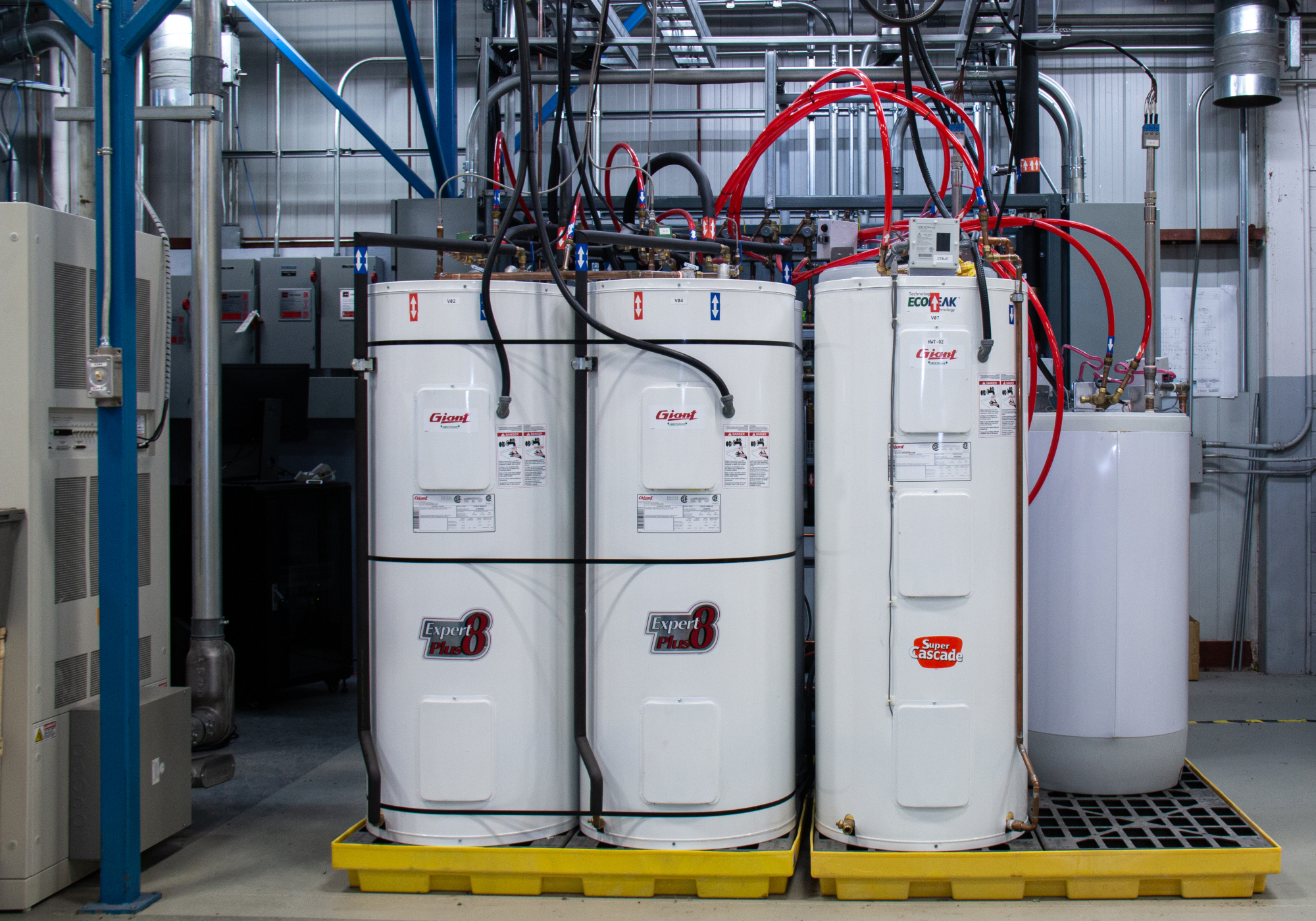
Electric water heater testbench at CanmetENERGY in Varennes
Canadian solar and PV maps and high-resolution solar radiation time series dataset
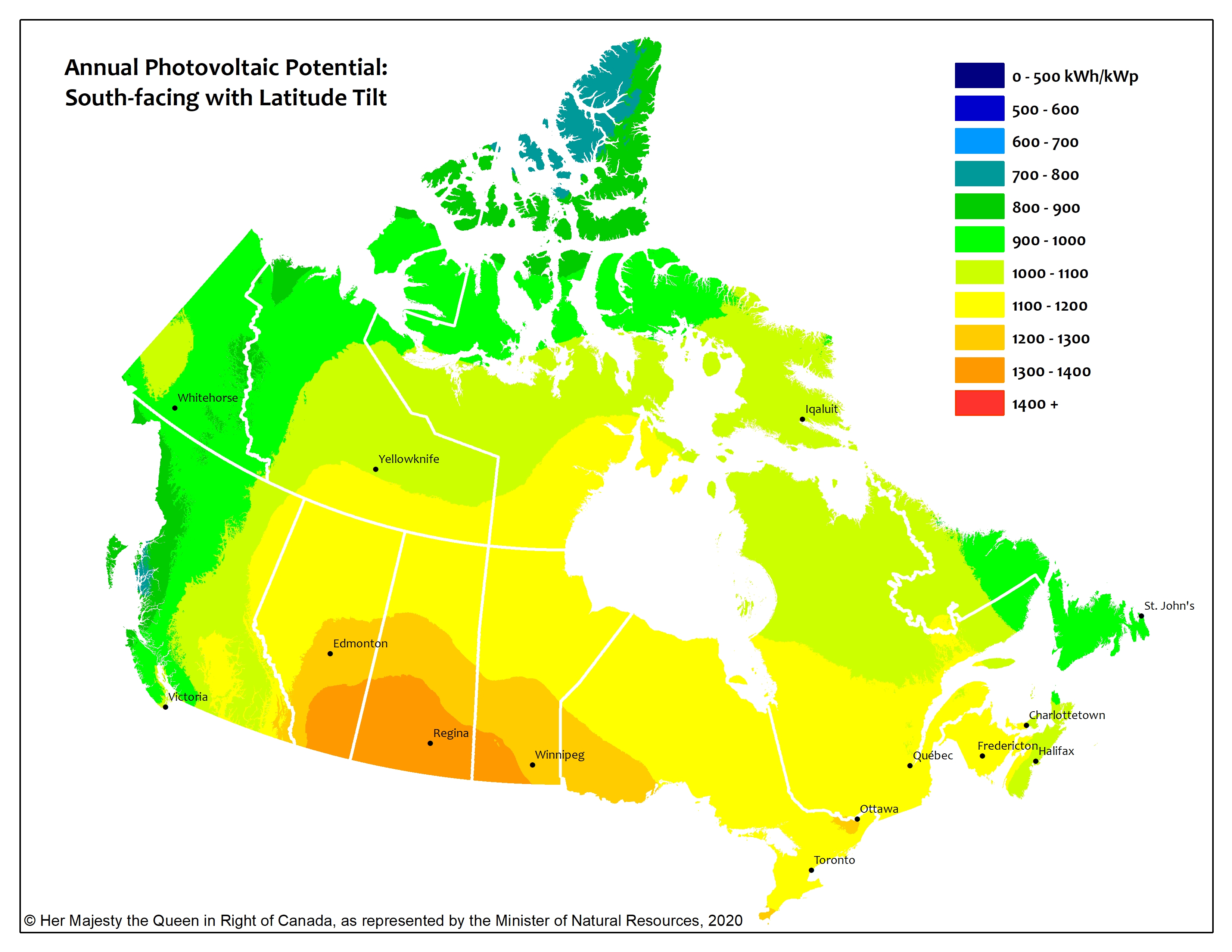
Since 2006, CanmetENERGY has been developing and supporting the Photovoltaic potential and solar resource maps of Canada resource and PV potential for different surface orientations for more than 3,500 Canadian municipalities. The maps were developed to share information in a simple‑to‑use format. As a result, they are being used by a wide variety of people, from homeowners interested in the solar potential of their location to actual PV system owners who want to validate the performance of their system, and even large-scale PV system developers assessing different design scenarios. In order to provide further guidance related to solar irradiance measurements, CanmetENERGY in Varennes has also produced a comprehensive list of publicly available solar irradiance data for Canada.
CanmetENERGY is also gathering high spatial and temporal resolution solar radiation time series in order to conduct power system simulations of the impact of short-term resources fluctuations of a power plant or neighbourhood. Our researchers are exploring solar variability prediction models, such as the wavelet and dispersion factor methods. By developing methods and starting to fill the knowledge gap, this research effort will support the development of smart power conversion products that will offer solutions and address concerns of electricity distribution system operators. The goal is to support the development of new control strategies and products in order to integrate higher levels of renewable energy resources on the electricity distribution system in Canada.
Page details
- Date modified: